- feeds
- popular
- recent
- reader
- about
- story
- technologies
- what is rss
- connect
- dmca
- contact
- Feed Preview Chinese Academy of Sciences – Asian Scientist Magazine
Human Activities Are Changing Forest Structure
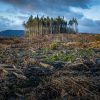
Research from China shows that increasing anthropogenic activities are altering the density of forests in protected areas and intact forest landscapes globally.
https://www.asianscientist.com/2023/02/in-the-lab/human-activities-are-changing-forest-structure/
High-Protein Diets Could Help Prevent Post-Diet Weight Regain

Researchers have discovered eating a high-protein diet after a restrictive diet could help prevent weight regain by supressing the presence of gut bacteria responsible for fat absorption.
Shallow Waters, Deep Troubles
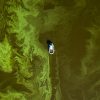
Researchers have found that shallow lakes may not only be more sensitive to human-caused nutrient pollution, but harder to restore compared to their deeper cousins.
https://www.asianscientist.com/2022/07/in-the-lab/shallow-waters-deep-troubles/
Owls That Ventured Out In The Sun
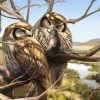
Fossil records unearthed in China suggest that a now-extinct owl species hunted during the day rather than at night.
https://www.asianscientist.com/2022/04/in-the-lab/owl-fossil-daytime-miosurnia-diurna/
A Dino Locked Inside A Bird Skull

A tiny bird skull uncovered in China provides clues to early birds’ jaws sharing similar functions with their dinosaur ancestors than modern birds.
https://www.asianscientist.com/2022/01/in-the-lab/dinosaur-fossil-bird-skull-tyrannosaurus-rex/
Ozone Pollution Threatens Asia’s Food Security
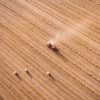
Ozone pollution has been linked with about US$63 billion in annual crop production losses, slashing wheat, rice and maize yield in East Asia.
https://www.asianscientist.com/2022/01/in-the-lab/ozone-emission-exposure-pollution-crop-loss/
Asian Scientist Magazine’s 2021 Roundup
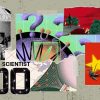
Here are 10 of Asian Scientist Magazine’s top stories in 2021, highlighting scientific advances in diverse domains from COVID-19 to climate change.
Pretty Grape: How Grape Seed Extract Makes Mice Live Longer

Research from China demonstrates that a flavonoid extracted from grape seeds increases the lifespan of old mice by killing cells that promote aging.
https://www.asianscientist.com/2021/12/in-the-lab/grape-seed-extract-anti-aging-in-mice/
Mining Microalgae To Reduce Carbon Emissions
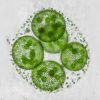
A new machine learning-powered method is speeding up how scientists study microalgal cell factories and their carbon cycling functions.
Digging Up The Genetic Origins Of Inner Asia’s Mummies

Genomic analysis of the Tarim Basin mummies has revealed their origins as a local group in China's Xinjiang region, rather than a migratory population.
https://www.asianscientist.com/2021/11/in-the-lab/genome-ancestry-tarim-basin-mummies-asia/
Shining Light On Why Beetles Glow
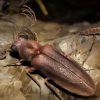
The discovery of a a 99 million year old amber fossil from Myanmar offers insight into how and why beetles began to glow.
https://www.asianscientist.com/2021/11/in-the-lab/fossil-bioluminescence-beetles-evolution/
Signs of Supereruptions: The Magma Beneath Toba

By combining geologic dating with computer modeling, scientists have discovered that constant magma build-up fueled Toba’s supereruptions, the largest in Earth’s history.
https://www.asianscientist.com/2021/11/in-the-lab/toba-volcano-eruption-modeling-magma-indonesia/
Asian Scientist Magazine’s June 2021 Roundup

Across Asia, scientists are uncovering the paths walked by ancient animals and looking for new ways to tackle dengue and climate change.
https://www.asianscientist.com/2021/07/features/asian-scientist-magazines-june-2021-roundup/
Dragon Man Discovery Rewrites Evolutionary History

The ‘Dragon Man’ skull uncovered by researchers from China could be a new species more closely related to modern humans than Neanderthals.
https://www.asianscientist.com/2021/06/in-the-lab/dragon-man-homo-longi-human-evolution/
Ancient Giant Rhinos Found In China
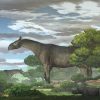
Move over, woolly mammoth! A new species of giant rhino that roamed ancient Asia’s open landscapes could be among the largest land animals that ever lived.
https://www.asianscientist.com/2021/06/in-the-lab/ancient-giant-rhinos-china/
Unearthing The Origins Of Flowering Plants

By scrutinizing collections of extinct plants, researchers have found the missing link between seed-bearing and flowering plants.
https://www.asianscientist.com/2021/05/in-the-lab/origins-angiosperms-flowering-plants-china/
Behind China’s Boom In Bitcoin Carbon Emissions

Without stringent regulations, China's Bitcoin mining emissions could surpass the annual emissions of several European countries by 2024.
https://www.asianscientist.com/2021/04/tech/china-bitcoin-mining-carbon-emissions/
Crunching The Numbers Of Climate Change
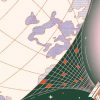
From short-term weather forecasts to decades-long climate simulations, supercomputers are giving scientists a peek into our planet’s future.
https://www.asianscientist.com/2021/04/print/supercomputing-asia-climate-change-numbers/
Asian Scientist Magazine’s March 2021 Roundup

Embark on a billion-year scientific odyssey through Asian Scientist Magazine’s top stories from March 2021.
Caught In the Act: Fossilized Remains Of A Nesting Dinosaur

For the first time ever, scientists have found a 70 million year old fossil in China capturing a dinosaur nesting on a clutch of unhatched eggs.
https://www.asianscientist.com/2021/03/in-the-lab/dinosaur-oviraptorid-fossilized-eggs-nest-china/
The Chinese Academy Of Sciences Flags 65 ‘Risky’ Journals

The Chinese Academy of Sciences has published a preliminary list of 65 ‘risky’ international journals, including periodicals from major publishers.
https://www.asianscientist.com/2021/01/academia/chinese-academy-of-sciences-risky-journals/
Rethinking The Rise Of The Third Pole
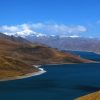
Researchers from China have found that the Tibetan plateau—also known as the world’s Third Pole—rose to its current height much later than previously thought.
https://www.asianscientist.com/2020/12/in-the-lab/third-pole-plateau-age/
Playing Hide And Seek With Medicinal Plants
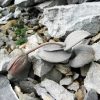
By blending in with its surroundings, a plant traditionally used in Chinese medicine has evolved to evade harvesting by humans.
https://www.asianscientist.com/2020/12/in-the-lab/medicinal-plant-camouflage-evolution/
Revealing The True Scale Of The Reptile Trade

Nearly 40 percent of all known reptile species are being traded illegally, researchers find.
https://www.asianscientist.com/2020/11/in-the-lab/illegal-wildlife-trade-asia/
A Triple Threat Against Cancer
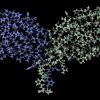
A three-in-one approach combining immune checkpoint inhibition, tumor microenvironment targeting and chemotherapy drugs could help tackle difficult-to-treat tumors.
https://www.asianscientist.com/2020/10/in-the-lab/immune-cocktail-therapy-cancer/
SARS-CoV-2 Could Infect The Human Brain

Although it primarily impacts the lungs, SARS-CoV-2 could also infect the brain and cause problems there.
https://www.asianscientist.com/2020/09/in-the-lab/sars-cov-2-infect-human-brain/
FAST Sheds Light On Extragalatic Dark Matter

FAST, the world's largest telescope, has detected neutral hydrogen emission from extragalactic galaxies for the first time.
Sun-Like Stars Reveal The Secret Life Of Lithium
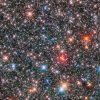
In contrast to theoretical predictions, stars can produce lithium after they become red giants, challenging our current understanding of the origins of lithium.
https://www.asianscientist.com/2020/08/in-the-lab/sun-like-stars-lithium/
Protective Antibodies Against COVID-19 Isolated & Characterized
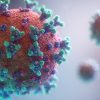
Potent neutralizing antibodies from COVID-19 patients have been isolated and characterized in two separate studies from China.
WEF 2020 Young Scientists Include Eight From Asia
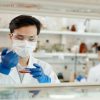
From neuroscience to satellite research, eight scientists based in Asia were honored as part of the World Economic Forum’s Class of 2020 Young Scientists.
https://www.asianscientist.com/2020/05/academia/world-economic-forum-wef-2020-young-scientists/
